On the afternoon of the 3rd of May, I found myself standing outside a house which had a windmill on its roof. A man came out to greet me, and my father told him when he started opening the gate, ‘’We are looking for Willie Bester’’. I quickly corrected him, ‘’Dad this is Willie Bester’’.
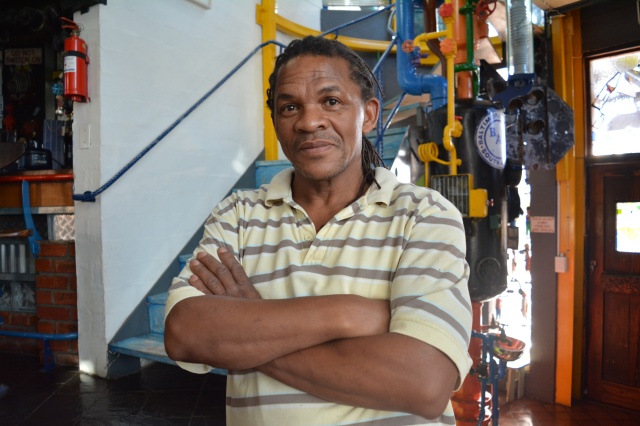
Artist Willie Bester
Recently at the University of Cape Town (UCT) , there has been a lot of discussion surrounding art works, particularly concerning how they represent certain events of the past, and what is deemed offensive and educational. Recently I got together with Willie Bester, the artist of the statue of Sarajie Baartman, which was created in 2009 and which currently resides in the main library at UCT.
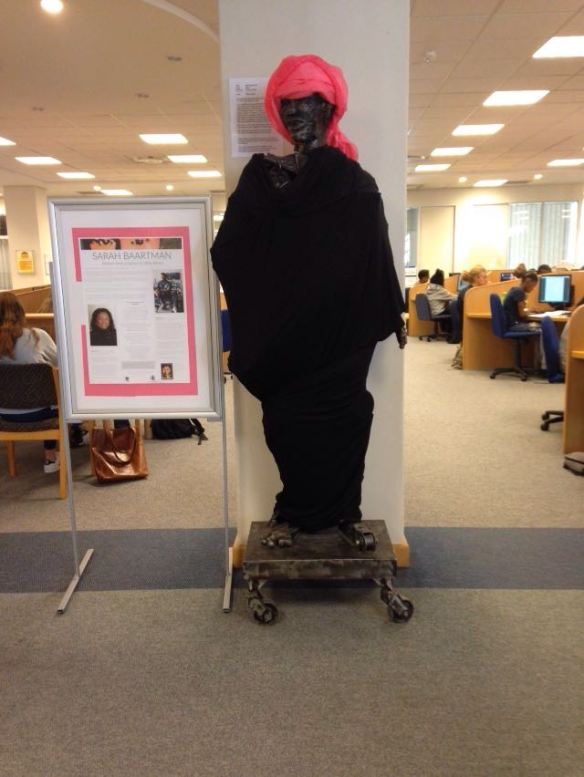
The statue of Sarah Baartman in the UCT main library
I wanted to get his opinion on the controversy surrounding the statue as well as his thoughts concerning the destruction and removal of certain art pieces at the University. The Saarjie Baartman statue itself has created a lot of discussion and debate because of its controversial subject matter.
I asked Mr Bester if he knew about the controversy surrounding the statue and he replied, “I don’t know what happened there, I just know it was covered up.”
Many students had in fact felt that the intention of the statue, was problematic especially in the way it depicted Sarah Baartman. Fathima, a Media student at UCT explained her thoughts on the statue and the artist, “I feel like the artist is using the image of her (Sarah) and is giving his own interpretation of what she looked like, ultimately he can be compared to the person who put her on display. What is the difference in exhibiting the real life Sarah Baartman and exhibiting a statue of her?’’
The covering up of the statue, was not the only artwork which has had to be modified in the past year. Just last year the statue of Cecil John Rhodes, which over looked UCT, was famously ‘vandalised’, it had gotten faeces thrown at it which was followed by a series of spray paint episodes, and then taken down.
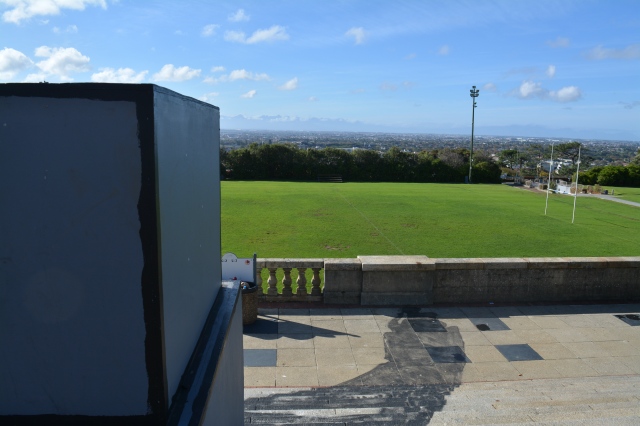
The podium where the statue of Cecil. J. Rhodes once stood
As a result The Rhodes Must Fall movement was also famously created around campuses in South Africa, which then led to movements like Patriarchy Must Fall, and Fees Must Fall. All movements which challenged societal structures in South Africa, and all as a result of a piece of art work.
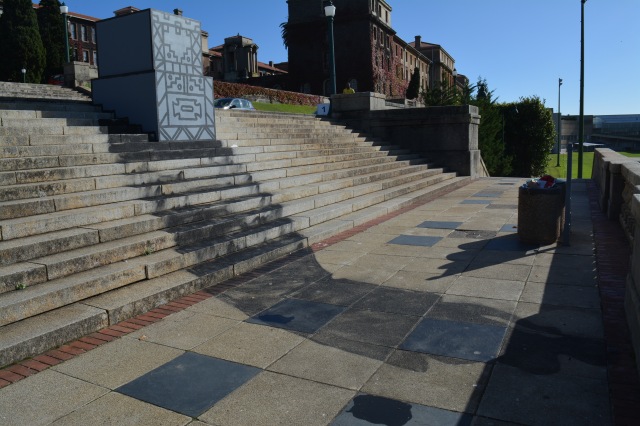
Students painted a shadow of the statue below the podium, after the statue was removed.
More recently during the Shackville protests in February of this year, students set paintings alight from UCT, which were deemed ‘offensive’ and a product of the ‘Colonial Era’. An issue was raised when it was found out that two paintings by Keresemose Richard Baholo, a black artist, were also burned in the protest, particularly because the aim was to destroy ‘colonial era’ type influences specifically from white bodies.
Mr Bester explained in response to the recent burning of artwork at UCT. “I chose the university because more people can have access to it, and on the other hand it is also an institution of learning. So it is the right place where you can discuss. To destroy it (the artwork) I don’t understand’’ Mr Bester replied.
A Council Artworks Task Team was created in September of last year (2015), as a result of the removal of the statue of Cecil John Rhodes. They were mandated to commission an assessment of artworks in UCT that could be recognised as something which celebrates ‘colonial oppressors’. The Task Team explain that a few of students had found ‘a number of artworks offensive for the way in which they depict black people’.
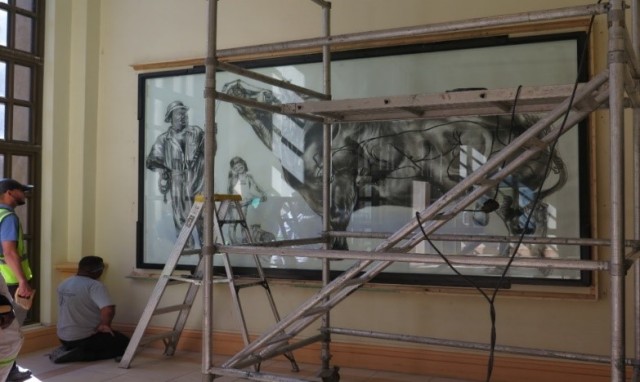
Art work which was deemed offensive, being taken down
The Task Team goes on to express that these works remain unavoidable because they function as a form of ‘Public Art’ and unlike most forms of Public Art they do not go through a specific process , in which the ‘public appropriateness’ is assessed. As a result most artworks on campus are given no context. The Task Team proposed a short term solution in which they temporarily remove ‘a core cluster of artworks identified as controversial while the university decides on the curatorial policy which it wishes to adopt’. Their reasoning behind this is that it allows the University to assess the images conveyed by particular artworks as well as to ‘consider whether they convey the image of the institution that the institution actively desires to project’.
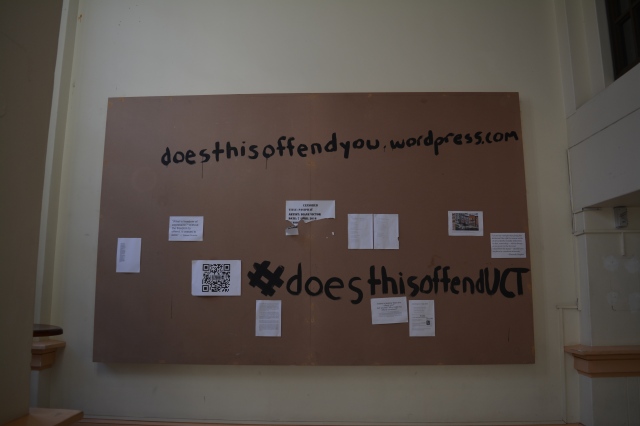
A board was put in place of the artwork
The Statue of Sarah Baartman was not removed, although it did qualify as one of the art works which caused controversy around the university. Instead UCT decided to ‘clothe’ Ms Baartman, as well as to give the statue a board which explained its history. I asked Mr Bester if he had been consulted or informed about this decision, ‘’I was not consulted, about what to do or why it was covered up or what the way forward is’’, replied Mr Bester. When I asked Mr Bester how he found out that the statute was covered he replied, ‘’someone sent me a sms’’.
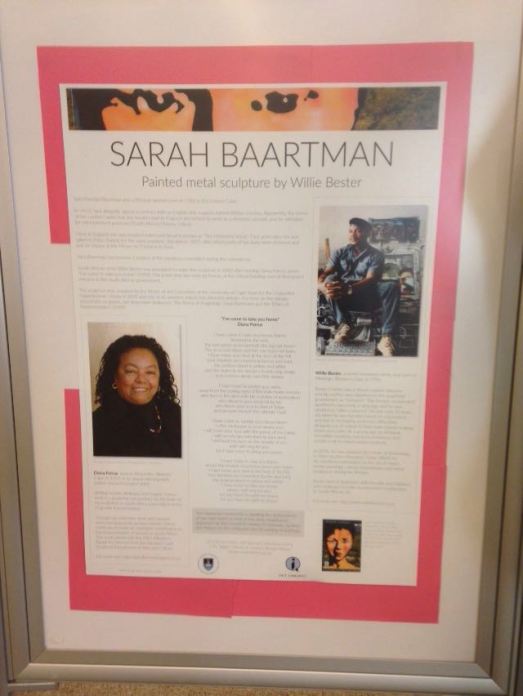
A board was placed next to the statue of Sarah Baartman to explain its context
I asked Mr Bester if the controversy surrounding the statue bothered him. He explained that he was happy that his art had created such strong emotions in people because, ‘’by creating these feelings, it shows that your artwork is impactful’’. However Mr Bester went on to explain that he didn’t understand, ‘’why you would attack an historical artefact? I don’t have anything against history’’.
As an artist your work will always create discussion and debate. I asked Mr Bester if he expected this type of reaction, “Challenged and discussed yes but not destroyed. That’s crazy, it’s senseless’’
To hear more about Mr Besters thoughts on the recent happenings at UCT, as well as the controversy surrounding Sarah Baartman go check out my interview with him:
